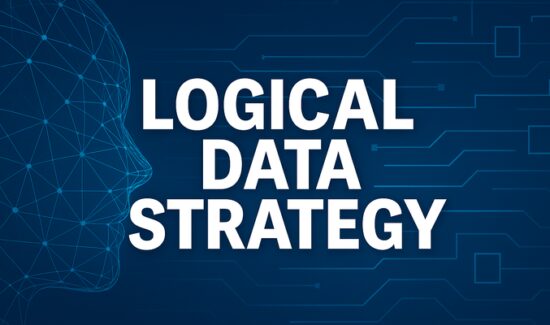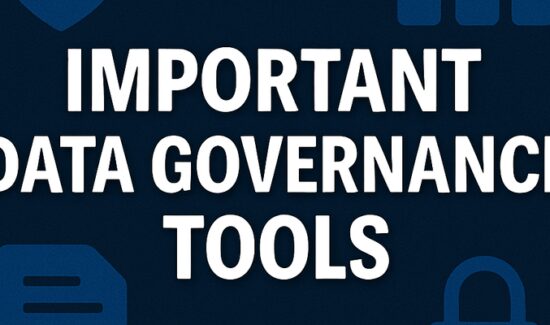Turning Data Hoarding into a Strategic Advantage


Quantum’s Skip Levens offers commentary on turning data hoarding into a strategic advantage. This article originally appeared in Insight Jam, an enterprise IT community that enables human conversation on AI.
In the past, data hoarding was often viewed in a similar light to physical hoarding—a costly and inefficient practice that cluttered storage systems with outdated and irrelevant information. Organizations that held onto data far beyond its perceived usefulness or beyond compliance requirements were often criticized for wasting valuable storage resources, which were expensive to maintain. With no thought for its future value, the focus was on keeping only the most relevant and recent data–anything beyond that deemed unnecessary and subject to deletion.
However, the landscape has shifted dramatically in recent years due to two major developments: the rise of cloud storage and the advent of artificial intelligence (AI). Cloud storage, both private and public, has made it easier and more cost-effective for organizations to store vast amounts of data as data objects. Meanwhile, AI has emerged as a game-changer, with its potential to learn and improve from every piece of data it processes. As a result, organizations that were once criticized for their data-hoarding practices now find themselves at a significant advantage if they can implement a data management lifecycle strategy that leverages their data for insights and business value.
AI’s Insatiable Appetite for Data
Today, the most valuable asset in any organization is not just data itself, but the AI models that can be trained and refined using that unique data. The narrative has shifted from questioning the value of retaining all data to recognizing its critical role in AI development. While many assume that AI success is all about investing in powerful GPUs, the reality is that the availability of extensive, diverse datasets is equally important.
However, organizations are realizing that even with vast data stores, it’s still not enough to fully train AI models. The demand for high-quality data has led to the rise of synthetic data, where AI models generate additional datasets to fill gaps. AI researchers now leverage synthetic data as a way to create entirely new training sets, augment real-world data, and reduce biases. This shift highlights just how valuable data has become—not just for internal use, but also as a tradeable asset. Organizations are now renting or loaning their datasets to partners to fuel AI initiatives, recognizing that even proprietary datasets might not be enough to keep up with AI’s growing needs. But it’s not enough to retain all the data, you also have to have a way to organize the data so it can be easily searched, accessible and useful to the business.
What Does Data Hoarding Look Like?
Data hoarding, at its core, is the practice and mindset of retaining every piece of data an organization generates, guided by a “just in case” mentality. As data flows throughout your organization, this data should be protected and managed. While this may seem straightforward, the types of data that organizations generate are diverse. Some common categories of data that organizations should consider retaining include:
- Customer Support Records and Transaction Histories: Organizations often keep detailed records of customer interactions and transactions, sometimes dating back many years, to analyze trends, improve customer service, or refine marketing strategies.
- Internal Communications: Emails, shared documents, call transcripts, and other forms of internal communication amongst employees are often stored, providing a rich resource for understanding organizational dynamics and decision-making processes.
- Research and Development Data: Whether generated internally or sourced externally, R&D data is invaluable for innovation and product development. Retaining this data allows organizations to revisit past ideas and leverage them in new ways.
- Backup Redundancies and Obsolete Software Versions: While these may seem like outdated remnants of the past, retaining backups and old software versions can be crucial for troubleshooting, compliance, and reference.
Data hoarding has been happening in other forms for centuries. Consider the Library of Congress, which has an overarching mission to protect a nation’s cultural legacy and so preserves documents dating back to the founding of the United States, or European museums and universities that maintain archives spanning hundreds or even thousands of years. The Vatican, for example, holds documents that are millennia old. These institutions preserve such documents for the same reason modern organizations should retain their data: for potential reference, analysis, and use in the future.
AI Use Cases and the Growing Importance of Data
Data fuels AI, and as AI adoption grows, so do its use cases. AI is now playing a critical role in various sectors, including:
- Surveillance and Security: AI is transforming surveillance through applications like line detection, crowd control, facial recognition, and integrating watchlists like the FBI’s Most Wanted list. AI-driven video analytics enhance real-time threat detection and public safety.
- Healthcare: AI models trained on vast medical datasets are accelerating drug discovery, improving diagnostics, and personalizing treatment plans.
- Financial Services: Banks and financial institutions use AI to detect fraudulent transactions, assess creditworthiness, and automate risk management.
- Retail and Customer Experience: AI-driven recommendation engines analyze past purchase behavior and browsing history to deliver personalized shopping experiences.
- Autonomous Vehicles: Self-driving technology relies on massive datasets to improve navigation, obstacle detection, and traffic pattern predictions.
Making Use of the Data
To successfully transform volumes of data into a valuable, competitive asset that drives innovation and business insights, organizations must implement a data lifecycle management strategy.
Many organizations today don’t have a complete lifecycle strategy. There are three key areas to a data lifecycle strategy: a working area, where data is actively worked on, cleansed, and mined for value; an area where that data is then backed up and protected; and finally, an archive area where all data is collected and retained for future AI model training and analytics.
Most importantly, as part of their data lifecycle strategy, organizations need to understand what data they have and the value in that data. Often, they don’t have a way to organize, tag, index, and catalog it, and therefore can’t understand the potential value their data presents to their business. Just like a card catalog in a physical library, your data “library” needs to be organized so it can be searched and accessed to be useful to the organization. Having an automated workflow solution in place that automatically organizes and categorizes your data to make it AI-ready is critical.
Turning Data Hoarding into a Strategic Advantage
Data hoarding, once considered a wasteful practice, has now become an essential strategy for organizations aiming to succeed in the age of AI and gain a competitive edge. The reality is that organizations need to start retaining all of their data—not because they will use it immediately, but because they cannot afford to lose the potential value that data may offer in the future.
However, simply hoarding data is not enough. Organizations must also ensure that their data is stored and managed, organized, tagged, and enriched in a way that delivers performance while being affordable and accessible. By doing so, organizations can position themselves to leverage their data for innovation and a competitive advantage and thrive in an increasingly data-driven world.



















